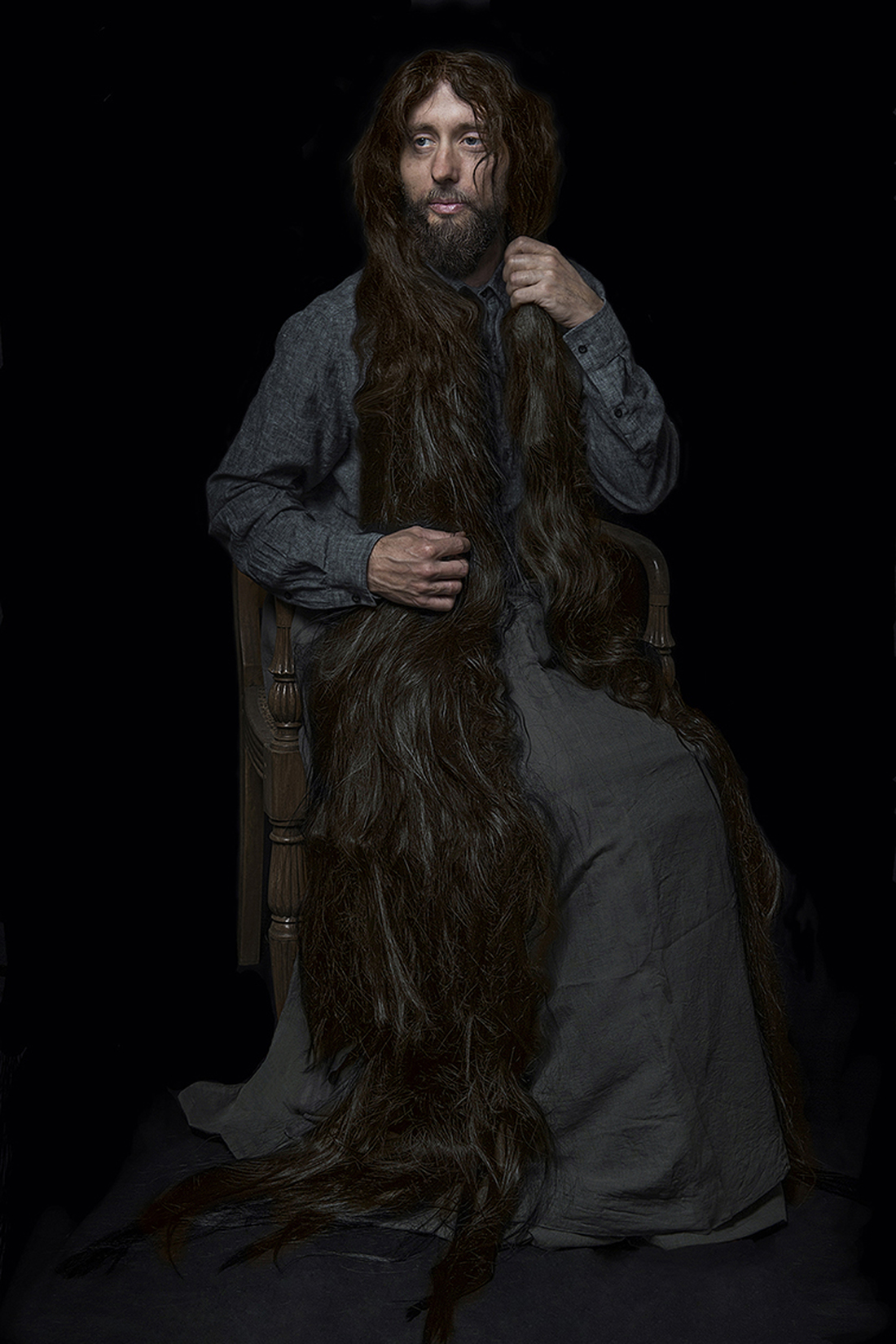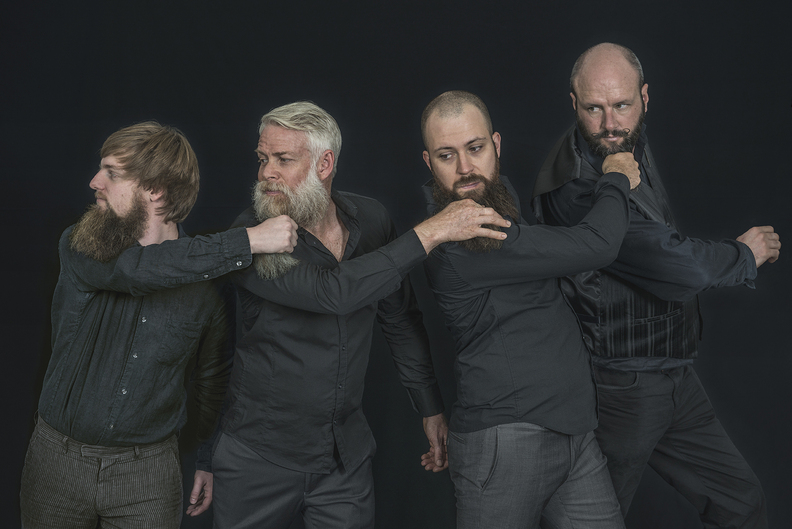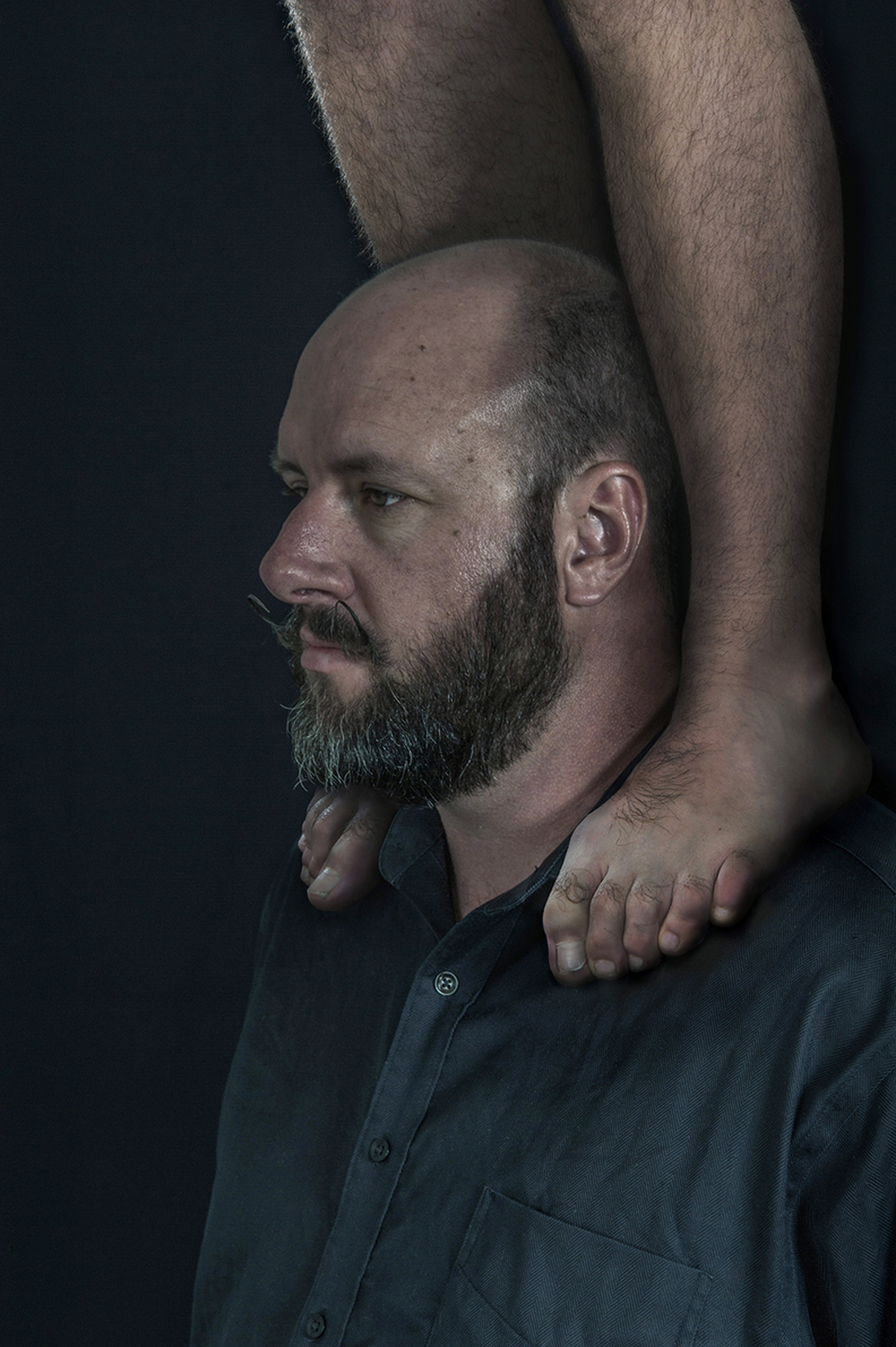THE SPACE BETWEEN US (trilogy) - 2015 - Digital photographs, 110cm x 70cm.
As in many societies, religious doctrine is a factor in the policing of hair. To mark their status, ladies never cut their hair among the fashionable middle and upper classes of Victorian society. In contrast, hair became the focal point of sexual interest and the primary expression of femininity could be seen as decadence if untied. What was decadent not that long ago now finds its civilian status as a third gender. Beyond sexuality, what some people consider a vice or confusion between gender will reveal balanced identities with one of its famous representatives, talented bearded lady Conchita Wurst.
Narcissus saw his own reflection in the water and fell in love with it. From the Greek myth we find the origin of the term narcissism, a fixation with oneself and one's physical appearance. Some say that narcissism is the direct expression of same-sex attraction but can we reduce homosexuality to a single schema, given the complexity of our human brain. Considering recent introduction to same sex marriage in our Western world, Canato’s Narcissus is a way to examine ethic and the relationship between narrative and representation.
Much like artists might look to religion or myths as a catalyst for their work, Patricia Piccinini with The Carrier, 2012, uses biology as a narrative to understand and express the issues of our contemporary world sparking a dialogue with our desire to homogenise the human body. Inspired by this particular work of hers, Christophe Canato’s ludic self-portrait with his partner in life, expressing the challenges of our ability to accept those who don’t meet our concept of the ideal.
Interior space of intensity, emotion and metaphor, this trilogy is a membrane between two worlds. That which we surrounded and the other one which belongs to the individual. A sort of no man’s land that can be seen like circus freaks; the bearded lady/lady boy, the giant and the conjoined twins.







